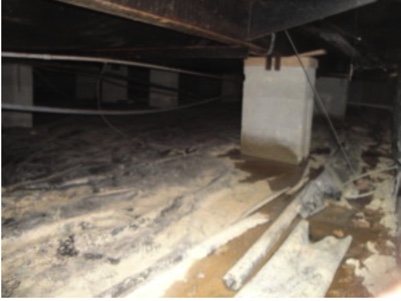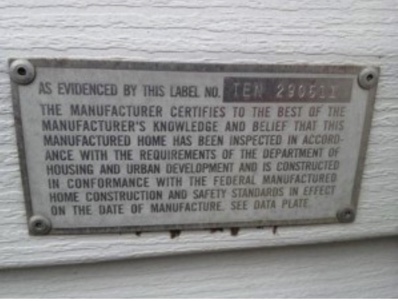
Property Taxes Just Went Up? We’ve Got You Covered!
It’s reassessment season for most folks in our area. Homeowners

Manufactured home. Double Wide. Trailer. Sectional home. Mobile home. Modular home. These words, for decades, have been used at one point or another, by various individuals, to describe different homes. Sometimes, this can be because of different names used in different parts of the country. Most of the time, though, it’s because there’s so much confusion around these terms, that no one knows what they’re selling!
So in this post, we’ll examine the difference between the two major types of non-site-built homes: Manufactured and Modular. Let’s will begin with a discussion on how to tell the difference between the two.
What is a manufactured home?
According to HUD, “A manufactured home (formerly known as a mobile home) is built to the Manufactured Home Construction and Safety Standards (HUD Code) and displays a … certification label on the exterior of each transportable section. Manufactured homes are built in the controlled environment of a manufacturing plant and are transported in one or more sections on a permanent chassis.”
In plain English, you ask?
Ok. If you have the following, you’ve got a manufactured home:

 If you have a single-wide manufactured home, you’ll only have one tag. If you have a triple-wide (yes, there is such a thing!), you’ll have three. And just so you know, a triple-wide isn’t actually three sections wide. But it is three sections.
If you have a single-wide manufactured home, you’ll only have one tag. If you have a triple-wide (yes, there is such a thing!), you’ll have three. And just so you know, a triple-wide isn’t actually three sections wide. But it is three sections. This paper has very important information about the manufacturer, date of manufacture, wind & roof loads, and also has the HUD and serial numbers listed.
This paper has very important information about the manufacturer, date of manufacture, wind & roof loads, and also has the HUD and serial numbers listed.
If you have an older manufactured home or one that has been remodeled, it’s very possible that the Certification Labels and/or the Data Plate will be missing. Even if these are missing, it’s still a manufactured home.
What is a modular home?
Unlike a manufactured home, a modular home is not built to HUD code. By exterior appearances (and sometimes even interior), a modular home can often be hard to distinguish from a manufactured home. Modular homes are entirely customizable. Therefore, any home you see while driving down the street could be a modular home.
A modular home is pre-built in sections at a factory or other controlled environment. It is then assembled on-site and must conform to all local and state building codes. Unlike a manufactured home, a modular home is not built on a non-removable steel chassis.
[bctt tweet=”Whether you’re buying or selling, knowing the difference between a manufactured and modular home could mean the difference between making and breaking the sale. ” username=”RiverfrontApp”]
Why is it important to know the difference?
As with any appraisal, an appraiser wants to be able to compare your home with others that would be considered ‘substitutes’. Essentially, we ask ‘would that sale have been considered by a purchaser if it were on the market at the same time as the subject?’ In many instances, modular homes and manufactured homes are not considered reasonable substitutes. One exception would be in the case of a very high-quality manufactured home set on a permanent foundation.
When appraising a manufactured home, there are certain guidelines appraisers must follow. We even have a form made specifically for appraising a manufactured home. Most lenders will want to see a minimum of two closed sales of manufactured homes. If sales are extremely limited, an appraiser might be able to use a sale of a modular home or other home, if needed.
Modular homes are somewhat similar in that a lender will want to see as many sales of modular homes as possible, but the options are greater for alternate sales. I can use a site-built home, high quality manufactured home, or other if I don’t have modular home sales. I just need to be careful to be aware of, and account for, any differences in quality of construction, design, and marketability.
All of this means that it is highly important that the home is classified correctly. Either by the taxing authority, Realtor, or seller. Because when an appraiser searches for sales, he or she needs to be able to find the best, most comparable sales!
Answers to common questions:
Whether you’re buying or selling, knowing the difference between a manufactured and modular home could mean the difference between making and breaking the sale. Make sure you advertise your home for sale correctly and make sure if you’re a buyer that you do your homework to make sure the home is what the seller says it is.
If you have any questions, feel free to contact us anytime!
Helping homeowners navigate the appraisal process,
Ryan Bays, SRA, AI-RRS

It’s reassessment season for most folks in our area. Homeowners

I feel like we all need a laugh. How about

So this may be a slight break from the norm,
Riverfront Appraisals has been providing comprehensive valuations of residential properties to Western Kentucky and Southwestern Indiana since 2008.